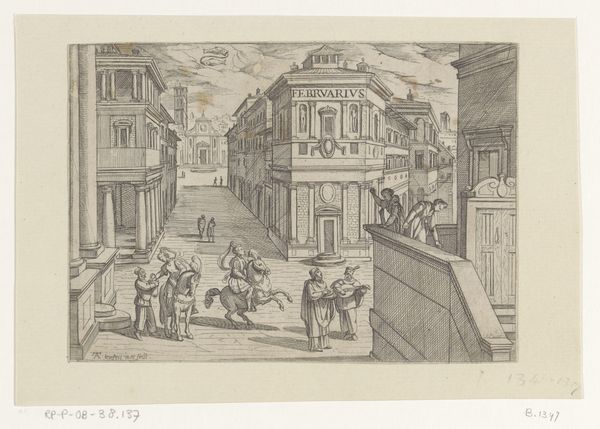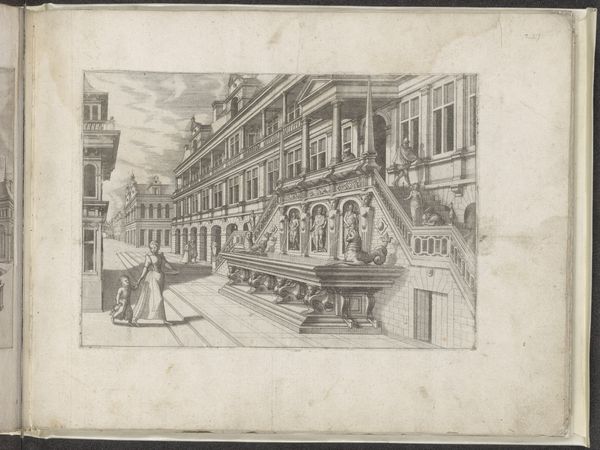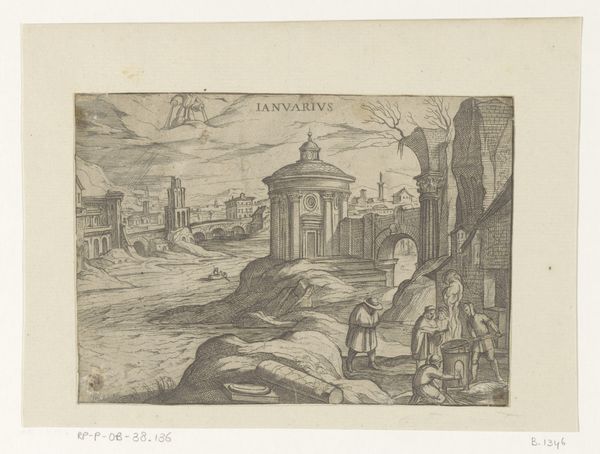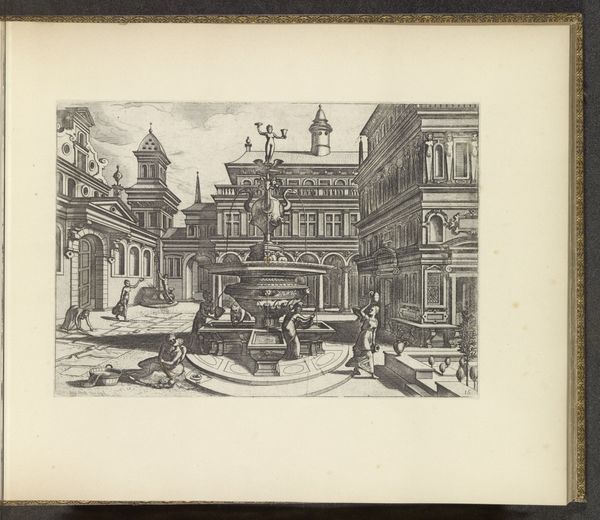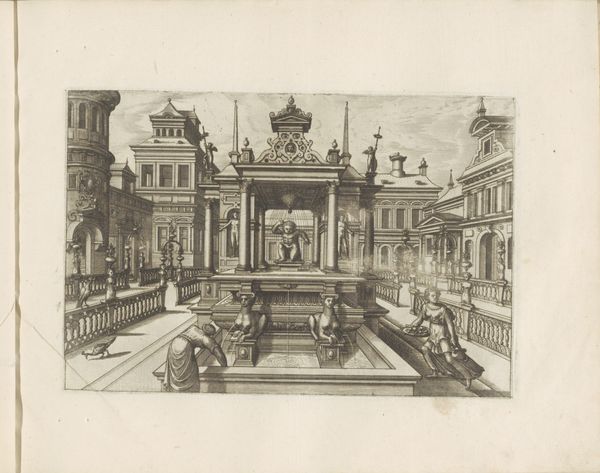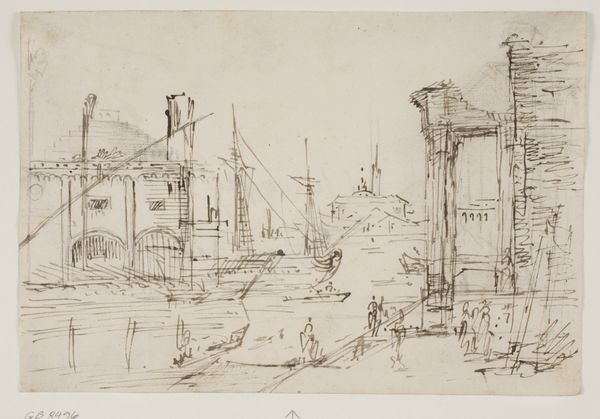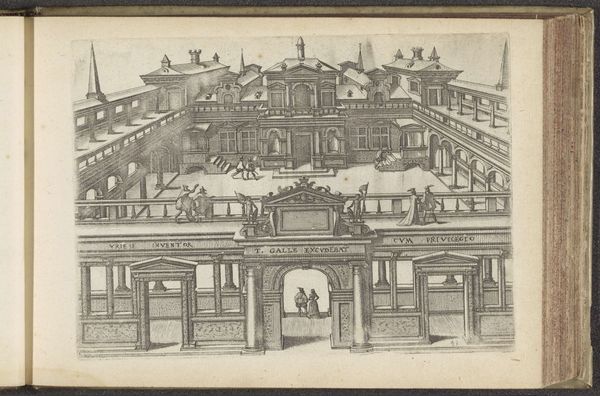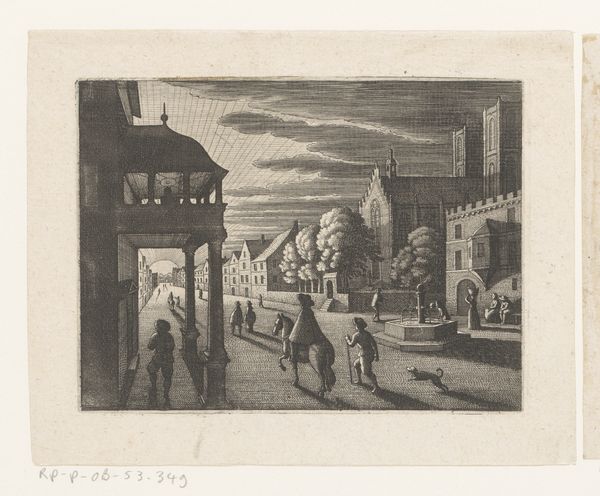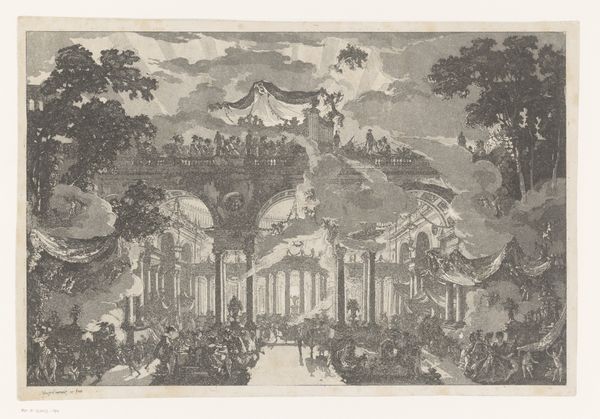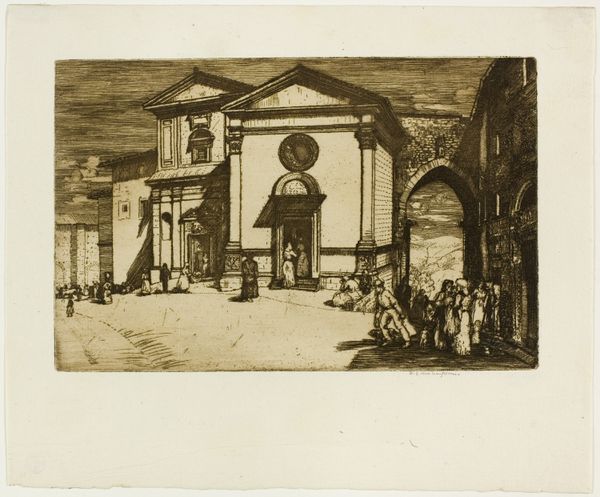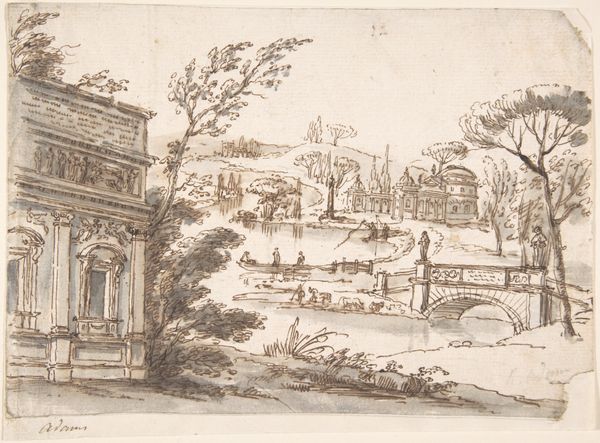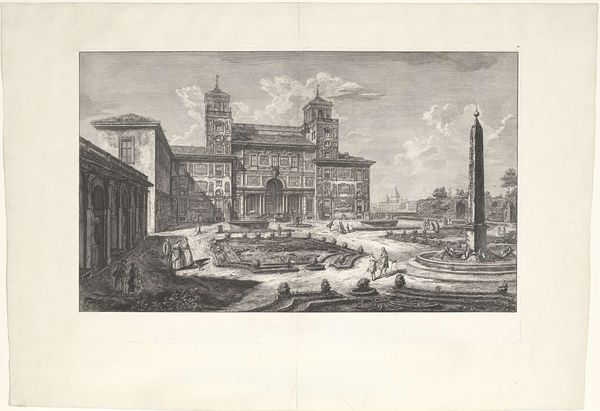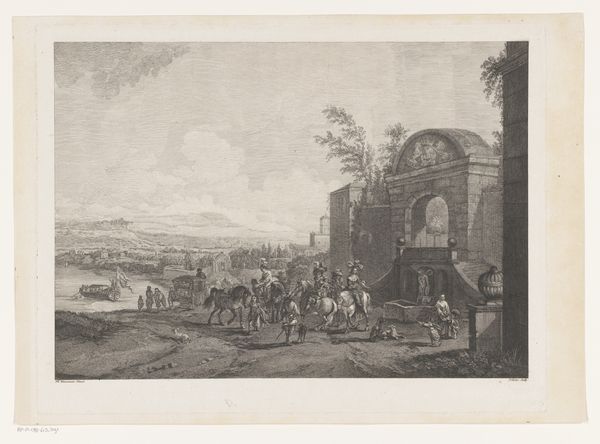
Portaal van een gebouw met composietzuilen en het zintuig gevoel c. 1610 - 1680
0:00
0:00
anonymous
Rijksmuseum
print, engraving, architecture
#
allegory
#
baroque
# print
#
landscape
#
geometric
#
history-painting
#
engraving
#
architecture
Dimensions: height 232 mm, width 338 mm
Copyright: Rijks Museum: Open Domain
Curator: Let's consider this engraving from the Rijksmuseum's collection titled "Portaal van een gebouw met composietzuilen en het zintuig gevoel" created anonymously sometime between 1610 and 1680. It’s a complex allegorical scene. Editor: It's visually striking, I'll give you that. The architecture dominates, of course, all sharp lines and angles, creating a powerful sense of perspective that then clashes with the more organic shapes of figures inhabiting this impossible space. There is a tonal tension I find disquieting. Curator: Indeed. The print engages with Baroque sensibilities in depicting allegorical representations of architecture alongside a portrayal of the sense of touch, a common theme of the era. These composite columns were aspirational and built through a lot of extraction and enslaved labor. Editor: That emphasis on material and labor—the very substance and social context from which this was created—is key. Look at the labor involved in just producing this image! The skill of the engraver painstakingly capturing these architectural details, the almost overwhelming sense of depth. Curator: And beyond the process itself, what about how the "sense of touch" is actually rendered here? Look at the ways gender roles are at play within the visual narrative—the female figure representing ‘feeling’ is shown inert within an interior, against the frenetic movements of masculine struggle and physical labour beyond the idealized walls. How might our own intersectional frameworks allow us to challenge and rethink 17th-century conceptions about the relationships between the senses? Editor: I see what you mean—the body representing Tactus becomes a symbol caught in this complex relationship of space, labor and feeling that's so often invisible or underplayed. Curator: Ultimately, analyzing this piece with an intersectional, social lens urges us to acknowledge the complexities of its original construction. Editor: Yes, focusing on materials and the process involved adds nuance to our perception beyond a simple allegorical interpretation. It invites critical examination of social dynamics then and today.
Comments
No comments
Be the first to comment and join the conversation on the ultimate creative platform.
